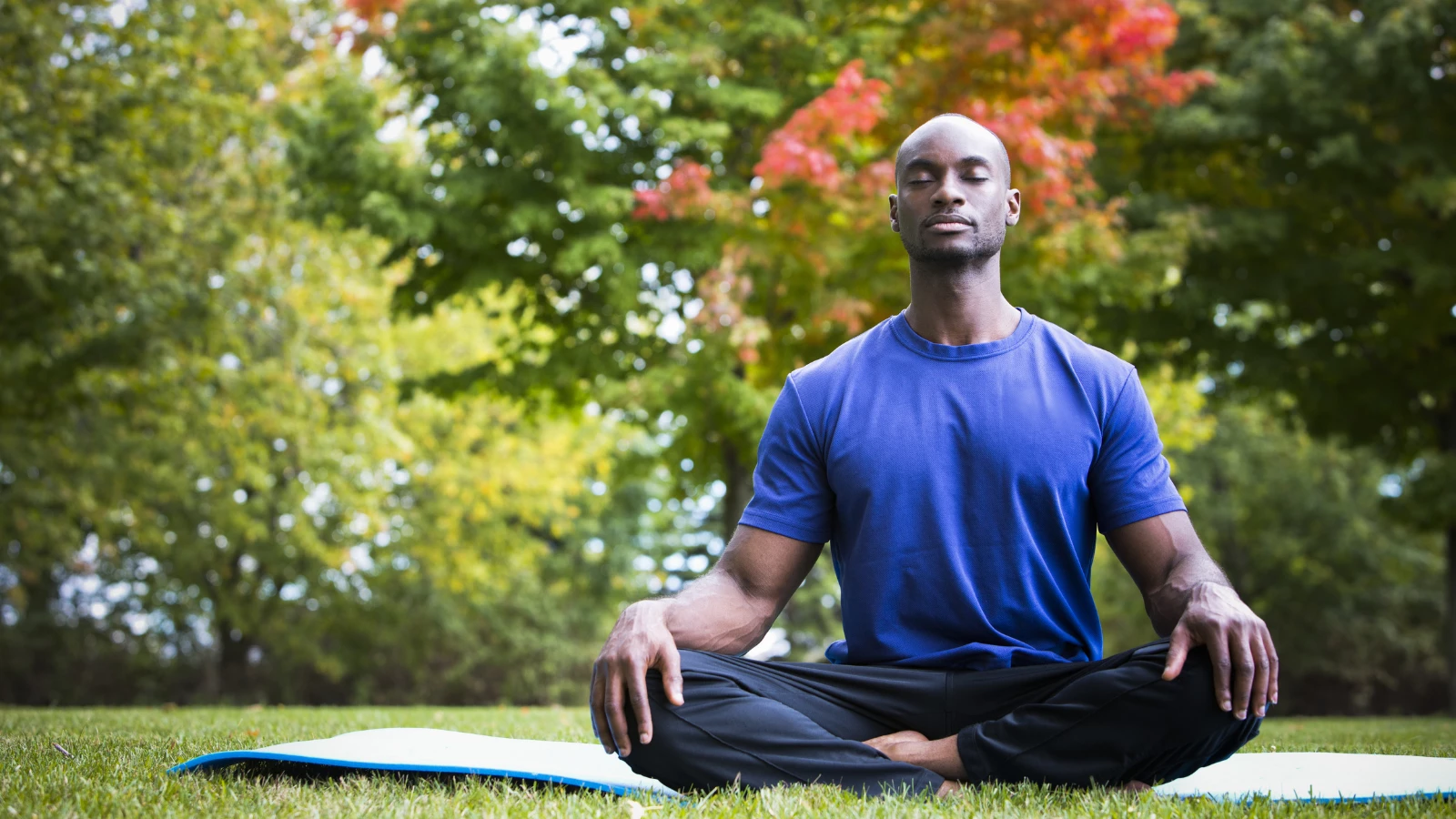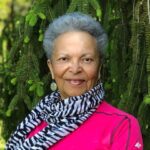The Five Koshas in Yoga: Keys to Waking Your Witness

Article At A Glance
The Panchamaya kosha model in yoga outlines five layes of our being. These are terms koshas – or sheaths. We mostly are aware of the outer shealth – the Annamaya kosha – or the physical body, and the Manomaya kosha – the. mind. But there is so much more to our being than that, writer author and yoga therapist Beth Gibbs in this article.
If I had to pick one of the five layers of self-awareness to focus on, it would be the Witness or Witness consciousness. Yes, the other four are important. You can’t live life without your body or your breath. You can live life without a fully functioning mind or your bliss but I would hardly call that living!
Think of the Witness as your personal GPS system. It will point you in the right direction if you are able to engage it and allow its wisdom to shine the light of awareness on all that you are for understanding, acceptance, and integration. Witness consciousness is interrelated with, overlaps, and shares space with the mind. To visualize this, imagine two circles that overlap for 90 percent of their circumference, like a Venn diagram. One circle is the mind, and the other is the Witness.
How the Mind and The Witness Work Together
A core belief that “I’m not good enough” can exist in both the mind and the Witness but at different levels of awareness. In the Witness circle, “I’m not good enough” might be seen and sourced as messages of unworthiness from family, friends, and the society at large for any number of reasons; race, gender, gender identification, class, physical or mental ability, etc. In the mind circle, “I’m not good enough” might be believed and expressed through depression, addictions, and other self-sabotaging behaviors.
However, the Witness, seeing where it comes from and knowing that the core belief, “I’m not good enough,” is not true, does its best to send that message to the mind through the overlapping space the two layers share. When the mind opens to receive the message, it may experience an aha! moment of total understanding, or be able to acknowledge that the cause and source of the belief will need to be examined. In either case, we can take steps to make a choice for positive change, keep the status quo with full knowledge of the consequences or find acceptance if a change is not possible.

Dismantling Beliefs
For example, I once held the belief that asking for help is a sign of weakness. In my life, this belief often co-existed with feeling angry, stressed, and overwhelmed with responsibility. When I finally reached my breaking point, my mind opened to the Witness. Only then was I able to trace that belief to its source.
I remembered watching my mom, my Aunt Lucy, and my favorite cousin Ella seemingly do it all. I watched them take on responsibility for family life, work outside the home, community involvement, and church projects.
The key word here, as you may have guessed, is “seemingly.” I am sure they could have used help, but I never heard or saw them ask for it. Why? I can guess. It might be that strong Black woman stereotype, the line from the Helen Reddy song, “I am woman, hear me roar,” or the independent, self-sufficient caretaker gene that many of us carry. I’ll never know for sure. My mom, aunt, and cousin have all passed, and I can’t ask them. I was left dealing with a lingering and possibly unhealthy aversion to being dependent upon and feeling obligated to others.
Witnessing, Seeing Clearly
The witnessing process helped me understand where that belief came from and how it was manifesting in mental and physical discomfort. I was able to take mindful steps to transform it. I learned to think clearly about asking for help, and can now ask for and accept help with gratitude. I no longer believe that asking for help is a sign of weakness. (Well, that’s true most of the time. It’s a process.)
Waking the Witness and using it to help you navigate through life becomes especially important when you are dealing with difficulty, such as a chronic or terminal illness, facing the loss of an important relationship or responding to a global pandemic. Your ability to witness enables you to respond in a more wise, calm, and more balanced manner.
How to Wake the Witness: Awareness of Sensation
Sensation can be defined as an impression, perception, or feeling in the body, such as tingling, pulsing, heaviness, firmness, tightness, ease, stretch, or pain; a change of temperature or connection with a surface. Because the body speaks with sensation and is accessible through our five senses, awareness of sensation is an effective practice for witnessing.
Note: It will be helpful to record the practice on your phone or tablet. Some like a slow, deliberate pace, and others may wish to move through the steps quickly. If you make your own recording or have a friend make it for you, you can pick the pace that works best for you.

A Witnessing Practice
To begin, take a position you can comfortably hold for three to five minutes. You can lie down as long as you remain awake. Close your eyes. If you choose to leave them open, soften your gaze or look down toward the floor if you are seated. As you move awareness slowly through the body, notice, sense, and feel any sensations that are present. If you catch yourself judging what you find, witness that.
1. Witness the Lower Body
- Take a moment to experience the toes, the bottoms of the feet, tops of the feet, the ankles, and the heels.
- Begin to draw your awareness into the lower legs, noticing the shins and the calves.
- Explore the knees, the area above and below the kneecaps, and the backs of the knees.
- Draw awareness to the thighs, tops of the thighs, and the sides and backs of the thighs.
- Bring awareness to the pelvis. Explore the place where the legs meet the hips.
- Notice sense and feel any sensations such as tingling, pulsing, heaviness, firmness, tightness, ease, stretch, pain, a change of temperature, or connection with a surface.
2. Witness the Torso
- Bring awareness to the lower abdomen, the area below the navel. Sense this area from the pubic bone to the sacrum. Explore the low back.
- Move awareness to the solar plexus, the area where the ribs meet in front of the body. Become aware of your middle torso from the solar plexus to the mid-back.
- Explore the entire area of the chest, heart, and lungs. Explore the upper back and the area between the shoulder blades.
- Notice, sense, and feel any sensations such as tingling, pulsing, heaviness, firmness, tightness, ease, stretch, pain, a change of temperature, or connection with a surface.
3. Witness the Upper Body
- Sense the shoulders and collarbones.
- Become aware of the arms relaxing along the sides of the body or in the lap.
- Take a long moment to pay focused attention to the palms of the hands.
- Allow awareness to travel up the arms, through the shoulders, and into the neck and throat.
- Begin to explore the head, the back of the head, the top of the head, the forehead, the area around the eyes, the ears, jaw, the inside of the mouth and the chin.
- Notice sense and feel any sensations such as tingling, pulsing, heaviness, firmness, tightness, ease, stretch, pain, a change of temperature, or connection with a surface.
4. Finish
- Allow awareness to become global, encompassing the whole of the lower body, torso, and upper body.
- As you witness the whole of the body, notice any sensations that stand out to you in this moment.
- Witness, and explore your experience without judgment.
- When you feel a sense of completion, begin to slowly move the fingers and toes.
- Stretch in any way that is comfortable as you return to full awareness.
- Feel free to journal or draw a picture of your experience.
With practice, we can engage the ability to witness on a daily basis to bring clear, focused attention to what we find in order to accept and integrate all aspects of ourselves, pleasant and not so pleasant. Working with the Witness helps us move through our lives with clarity, contentment, and resilience.
Carl Jung said it best, “The psychological rule says that when an inner situation is not made conscious, it happens outside, as fate.”
Also, read...
Is Magnesium Deficiency Contributing to Your Muscle Tension, Pain, or Fatigue?
An Ayurvedic Drink for Better Sleep
A Slow Burn: Somatic Approach to Exercise
Related courses
Breath as Medicine: Yogic Breathing for Vital Aging
Yoga and Myofascial Release: Releasing Chronic Tension with the Bodymind Ballwork Method

Beth Gibbs, MA, is a faculty member at the Kripalu School of Integrative Yoga Therapy. She holds a master’s degree in Yoga Therapy and Mind/Body Health from Lesley University in Cambridge, MA. She is the author of Soul Food, Life-Affirming Stories Served with Side Dishes and Just Desserts, Enlighten Up! Finding Clarity, Contentment, and Resilience in a Complicated World and Ogi Bogi, The Elephant Yogi, a therapeutic yoga book for children. Beth is an experienced workshop leader and public speaker. She blogs at bethgibbs.com



